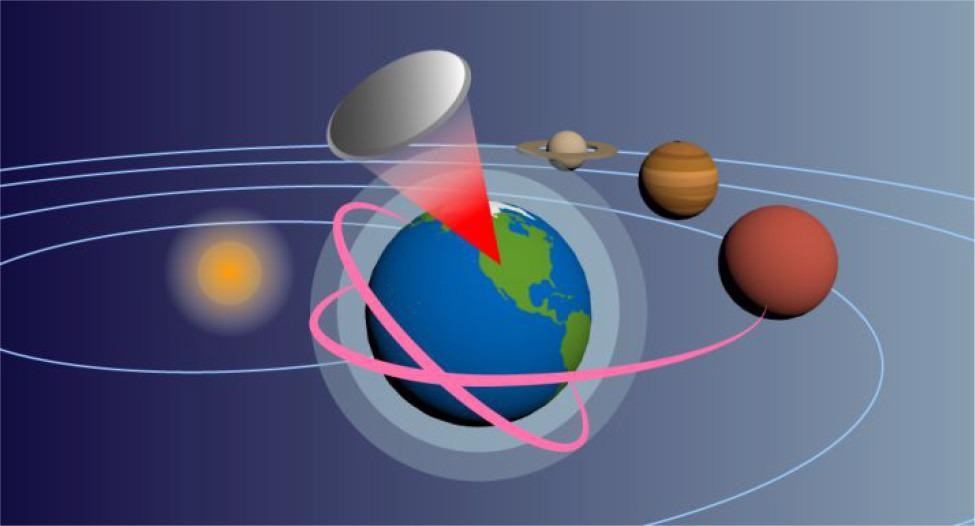The progress of space travel can be agonizingly slow. For instance, the New Horizons probe took nearly a decade to reach Pluto. Traveling to Proxima Centauri b, the closest habitable planet to Earth, would require thousands of years with even the largest rockets.
 In this illustration, a low-power laser (red cone) on Earth could be used to shift the orbit (red lines) of a small probe (grey circle), or propel it at rapid speeds to Neptune and beyond. Image Credit: Adapted from Nano Letters, 2022.
In this illustration, a low-power laser (red cone) on Earth could be used to shift the orbit (red lines) of a small probe (grey circle), or propel it at rapid speeds to Neptune and beyond. Image Credit: Adapted from Nano Letters, 2022.
In a recent study, scientists evaluated that low-power lasers on Earth can launch and maneuver small probes fitted with boron nitride or silicon sails. When compared to rocket engines, this allows them to travel at much faster speeds.
The study has been reported in the ACS’ Nano Letters journal.
Rather than catching wind like the sails on boats, “laser sails” would catch laser beams and could, in principle, push spacecraft at almost the speed of light. Researchers have been working on this idea for some time.
For instance, one privately funded project known as the Breakthrough Starshot initiative targets sending a small, sailed probe weighing nearly a gram to Proxima Centauri b with a flight taking only two decades.
It will be propelled to 20% of the speed of light by a 100 GW, kilometer-square laser array. Ho-Ting Tung and Artur Davoyan questioned if much lower-power, smaller laser arrays could be used in applications where traditional electric and chemical rockets are being utilized currently.
Eventually, the lasers might be able to adjust the orbit of satellites following launch or propel tiny sailed probes on interplanetary or interstellar missions. This can be done in the absence of large amounts of fuel.
The scientists conducted calculations to illustrate that even lasers with powers of nearly 100 kW and array sizes of around a meter could power a 1 g probe at velocities considerably surpassing the current record with just minutes to hours of laser illumination.
As per their calculations, the lasers have the ability to maneuver small probes between various Earth orbits in just a day. This cannot be made possible with the electrical and chemical rockets available at present.
The researchers identified that the best materials for the laser sails, which enabled high reflectivity and rapid cooling, were boron nitride and silicon nitride structured at the nanoscale.
Eventually, the scientists determined that such tiny laser-propelled probes could travel far quicker to escape the solar system, thereby reaching five times higher velocities compared to the New Horizons probe.
According to the scientists, such a prototype sailed spacecraft, pushed by low-power lasers, could set the stage for fast space exploration and future interstellar flight.
The authors acknowledge financial support from NASA, the Air Force Office of Scientific Research, UCLA, and the Hellman Society of Fellows.
Journal Reference:
Tung, H.-T. & Davoyan, A. R. (2022) Low-Power Laser Sailing for Fast-Transit Space Flight. Nano Letters. doi.org/10.1021/acs.nanolett.1c04188.